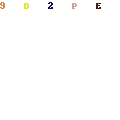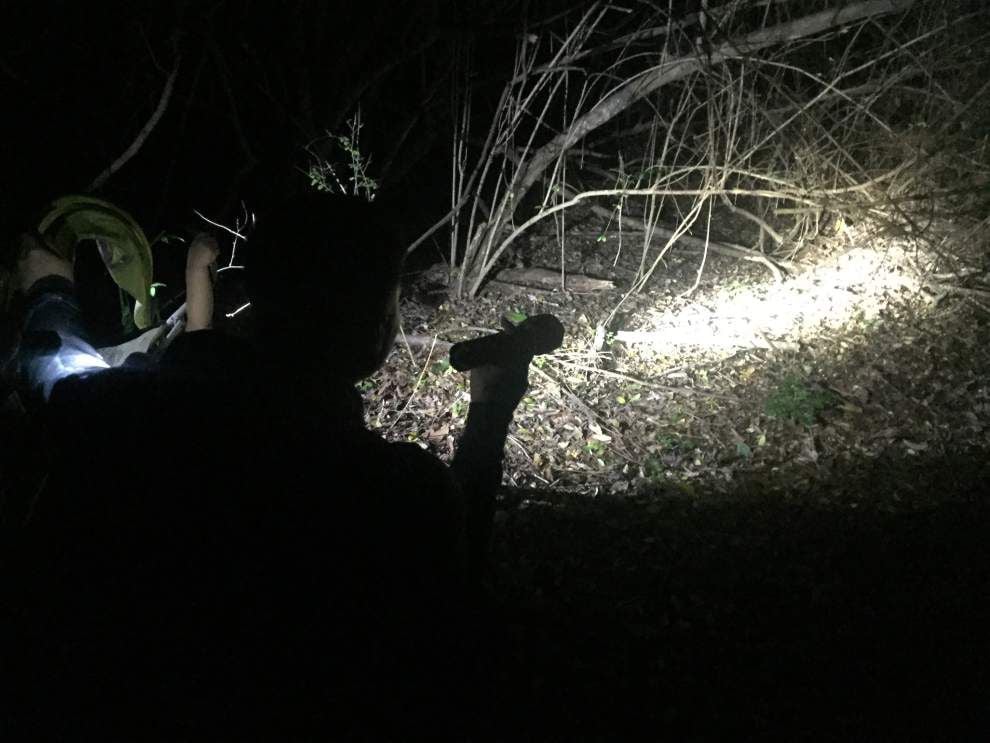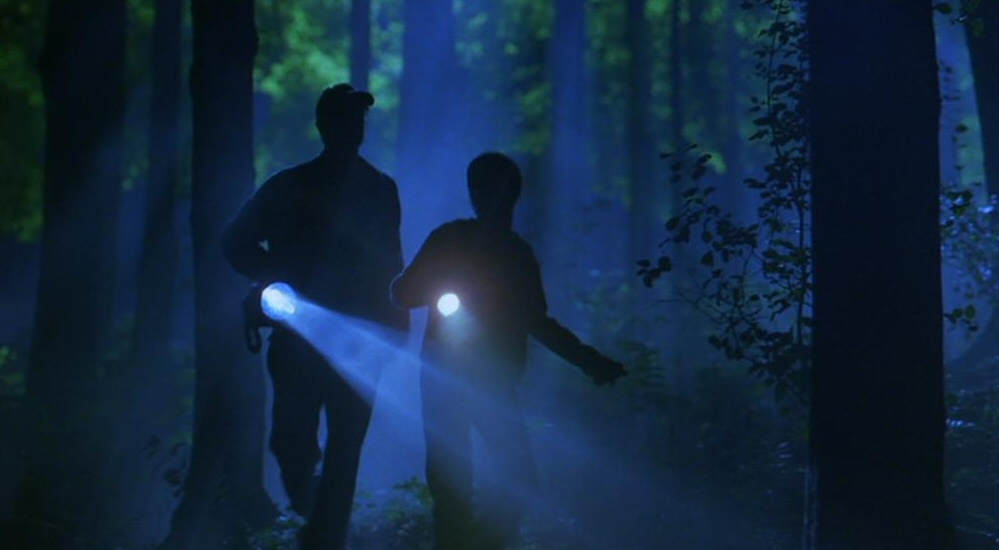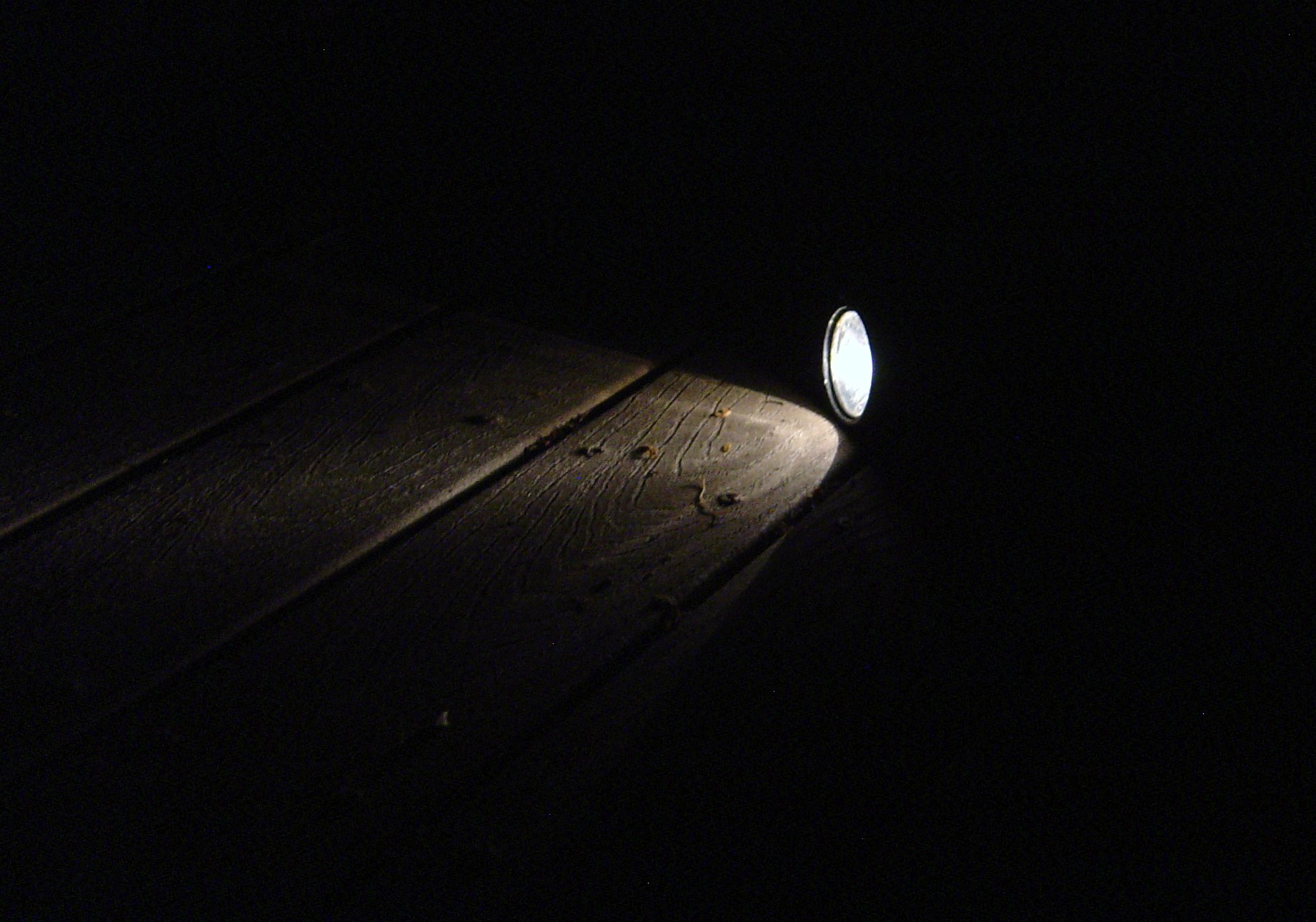Like the RS11, the XTQ1 comes in a store-shelf display
packaging. (Check out Klarus Light’s Winter Special for the XTQ1 – 50% discount
due to incorrect packaging for the flashlight!)
The hard anodizing is a matt dark brownish gray and
consistent throughout with no chips or blemishes. Lettering is not very bright
white, but legible against the background.
You can take the light apart without any tools and get three parts.
You can take the light apart without any tools and get three parts.

The XTQ1 has a stainless steel crenulated bezel ring, which is removable, allowing light to shine through when left placed head down. Like the RS11, the bezel ring is not directly touch the o-ring & lens in the head. There is an inner ring similar to bracket between the bezel ring and lens. This structure seems more shock-resistance.
There is a raised contact spring in the head of the light, so flat-top 18650 batteries should work fine in the light. The light has reverse polarity protection to protect from incorrect battery installation (i.e., the electronics of the XTQ1 has in-built reverse polarity protection).
The light uses toughened ultra-clear lens. The purple hue is reflected on it. The aluminium reflector has a light orange peel pattern. Surface finish on the reflector is nice from visual inspection, and well-centred LED sits at the bottom of the reflector cup.
The battery tube has no knurling. But with all the ridge detail and extra elements around the head and body, overall grip is good. The stainless steel clip-on pocket clip seems to hold on fairly well. It is head-facing, and not reversible. The bundled grip ring is a metal. It can spin even when the tail cap is fully tightened, but it's not inconvenient using the light.
The wall thickness of the body is about 1.9mm, and the light seems reasonably solid.
The screw threads are trapezoidal-cut of good quality. Both male and female threads in the head and tail part are well machined, with being anodized which allows the light to be locked-out when the head or tail cap is slightly loosened. Threads on the both ends of the body mate well with no issues of cross-threading or grinding.
At the tail base, you can see a slightly sunken surface that is very flat. The distinctive aspect of the light is a metal flat switch with no audible click when pressing it. This switch gives you a large contact area and allows the light tail stand perfectly. The switching travel is shorter than average, with average resistance.

There is a brief pre-flash when making initial contact of the tail cap with the battery, and a second pre-flash when fully tightened. There is also a brief pre-flash when the tail cap is fully loosened. There is no pre-flash when activating the light in any mode.
Overall Impressions
• Build quality is very high
• No audible click (i.e., quiet) when pressing the tail switch
• Anti-roll indentations on the body
• The light can tail stand stably
• Electrical reverse polarity protection function
• Standby current drain, but quite negligible
• No mode memory (i.e., always comes on in High)
• True flat-top batteries work fine
• Timed step-down feature on High
• Output-runtime efficiency seems fine
• True Moonlight mode is not available
• Brief pre-flash when making initial contact of the tailcap with the battery and when fully tightened
• The beam tint is typical cool white
• Throw is reasonable for the class
• Build quality is very high
• No audible click (i.e., quiet) when pressing the tail switch
• Anti-roll indentations on the body
• The light can tail stand stably
• Electrical reverse polarity protection function
• Standby current drain, but quite negligible
• No mode memory (i.e., always comes on in High)
• True flat-top batteries work fine
• Timed step-down feature on High
• Output-runtime efficiency seems fine
• True Moonlight mode is not available
• Brief pre-flash when making initial contact of the tailcap with the battery and when fully tightened
• The beam tint is typical cool white
• Throw is reasonable for the class




